Lo Khe village (Lien Ha commune, Dong Anh district, Hanoi city) is known as the "cradle" of the art of Ca Tru for more than 600 years, not only famous for the songs echoing from the village communal house but also a place to nurture souls who are attached to traditional music for life. In that land, singer Dinh Thi Van (born in 1990) from her childhood memories was raised by the melodious, magical sounds of clappers and stone zithers.
Secret love for ca tru
Although born and raised among traditional sounds that resound all year round, Dinh Thi Van's relationship with Ca Tru did not start from passion but from a quiet journey, from contact, gradually understanding and then love blossomed, leading her to devote her entire youth to Ca Tru. In 2002, when she was only 12 years old, Van started attending her first Ca Tru class at the village communal house in Lo Khe village. "Back then, I learned Ca Tru only because I was encouraged, without really understanding or loving it. The classes that opened to teach at that time were small, only about ten or twenty people. But in the whole class, not everyone could sing. Some people studied for a long time but still could not sing a tune in the right rhythm and right breath," Van shared sincerely.
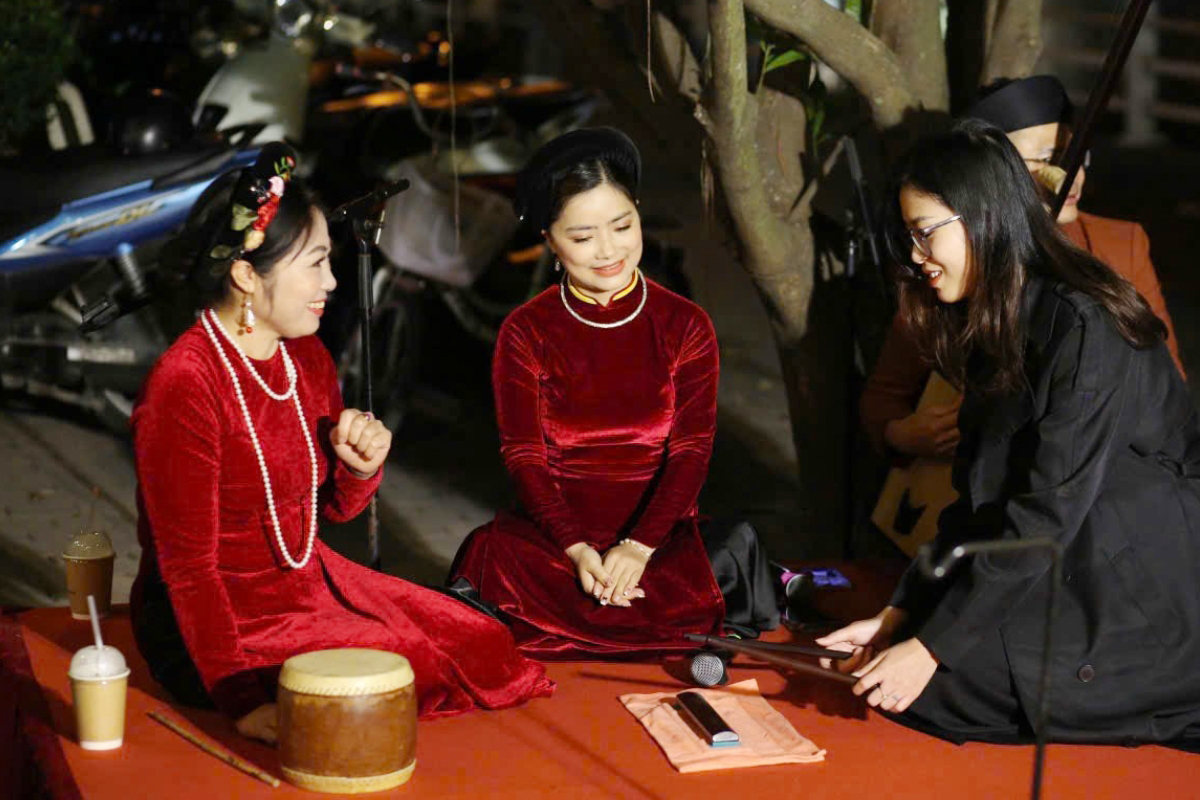 |
Artist Dinh Thi Van (middle) and the audience experience clapping, spreading love for the heritage of Ca Tru. |
But it was from that “not liking” that an art seed took root firmly. Right from the first time learning, Dinh Thi Van surprised everyone when she could play the clappers with a steady rhythm. Because ca tru is not just singing, but a combination of feeling the music, understanding the music and the ability to coordinate the clappers, singing voice, the stone instrument, and the drums. Therefore, that talent was like a red thread that brought her into the enchanting world of ca tru, where once you enter, it is difficult for you to turn back.
As a student of two famous artists Pham Thi Man and Nguyen Thi Thao, Ms. Van was passed on the quintessence of the ancient communal house singing genre. It was not until 10 years later, when she had grown up and studied at the Faculty of Music Pedagogy ( Hanoi Pedagogical University), that the beautiful girl truly opened her heart to the melodies of her homeland. From her initial curiosity, she gradually immersed herself in the profound melodies of Ca Tru, especially through the voice of People's Artist Quach Thi Ho. The way she enunciated, held her breath, and hummed each verse moved her and she could not stop. "To enjoy Ca Tru, you need a certain foundation of musical appreciation. Even though I studied music, I still feel that I am too young to fully understand the depth of a classic Ca Tru piece," she confided.
Although she has not had the opportunity to learn directly from the “monument of Ca Tru of the 20th century” - People's Artist Quach Thi Ho, through old tapes and CDs, she still imbued with the noble spirit, dignified and elegant demeanor of the old man. Therefore, the artistic style of artist Dinh Thi Van today is a harmonious blend of traditional discipline and a youthful, flexible spirit, so that Ca Tru is not only quiet in the past but also throbbing in the hearts of young people of the present.
 |
In 2005, she was honored to receive the Silver Prize at the National Ca Tru Festival. Since then, awards have come regularly as a silent recognition of a persistent and passionate soul. “I do not follow Ca Tru to live, but live to follow Ca Tru,” she confided.
As long as young people still sing, ca tru will not die out.
In 2017, Dinh Thi Van became a music teacher at Nguyen Binh Khiem Secondary and High School (No. 6 Tran Quoc Hoan, Cau Giay, Hanoi). Here, she not only teaches music, but also tries to "sow" the love of tradition into the young generation of students, the generation that is being drawn into vibrant, commercial melodies. "At first, the students were not very interested, but the more they learned and explored, many of them found their own passion for Ca Tru," she said.
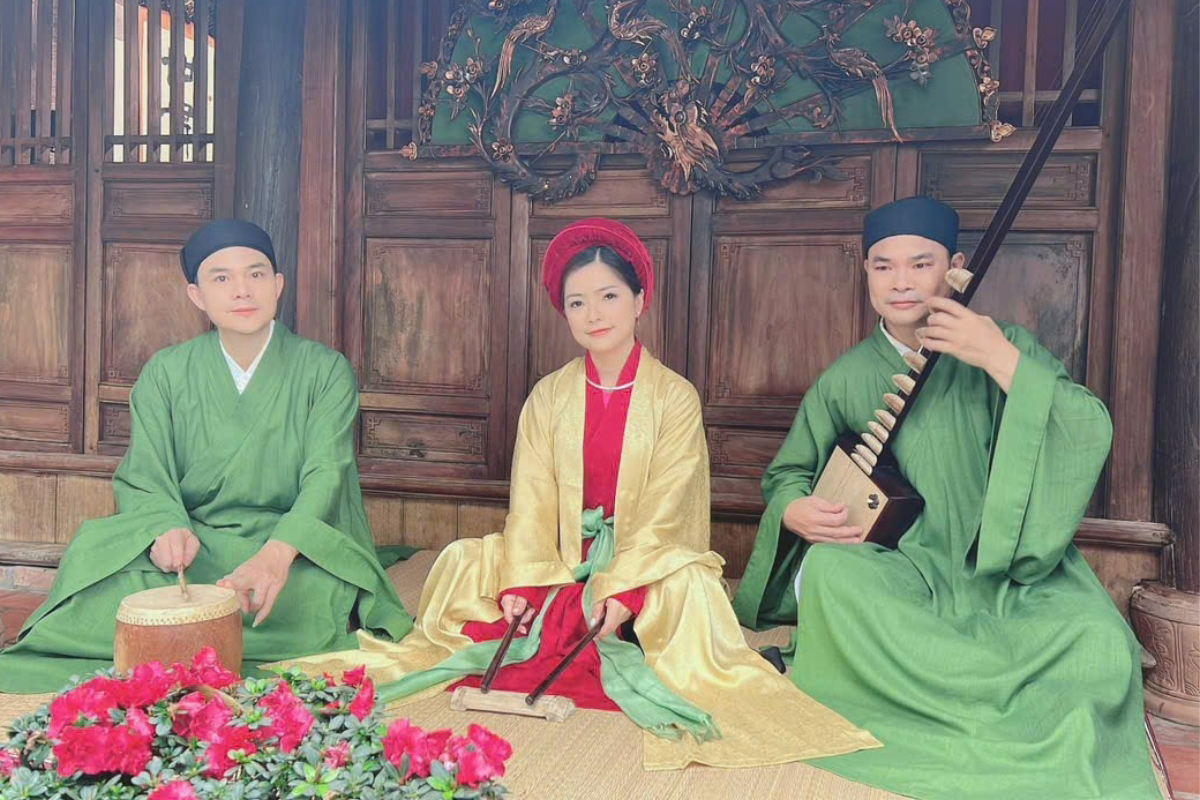 |
She teaches by interweaving theory and emotion, the lessons are not simply class hours but like intimate sessions about the national soul. She uses comparisons between musical genres such as hat van, quan ho, xam, cheo to help students clearly distinguish the unique nuances of ca tru, an art that is inherently "aristocratic", delicate down to every tone. She often teaches so that students feel that ca tru is not just music, but the national soul, a love song that resonates from the past, gently vibrates in every beat, penetrating people's hearts through each poignant lyric.
“Ca tru lives on continuity, but without students, teachers cannot pass it on,” she worries. Although she still regularly participates in performances with the guild, veteran Ca Tru artists, she admits that she does not have much time to teach at present. “I work all week, so I can only spare time for artistic activities. But I believe that as long as there is a young person listening, Ca Tru still has hope to live on.”
Artist Dinh Thi Van was once one of the young singers who performed alongside Meritorious Artist Bach Van, a great teacher who devoted all his personal assets to restoring and preserving Ca Tru. “Back then, I both studied and taught Ca Tru, and then busied myself performing. Although I was a student, I was on the street almost every night, performing tirelessly as a habit, as an inseparable part of life,” she said. She appeared many times in key cultural programs and on television, but for her, glory did not lie in the lights but in the moment when she saw her students singing with tears in her eyes.
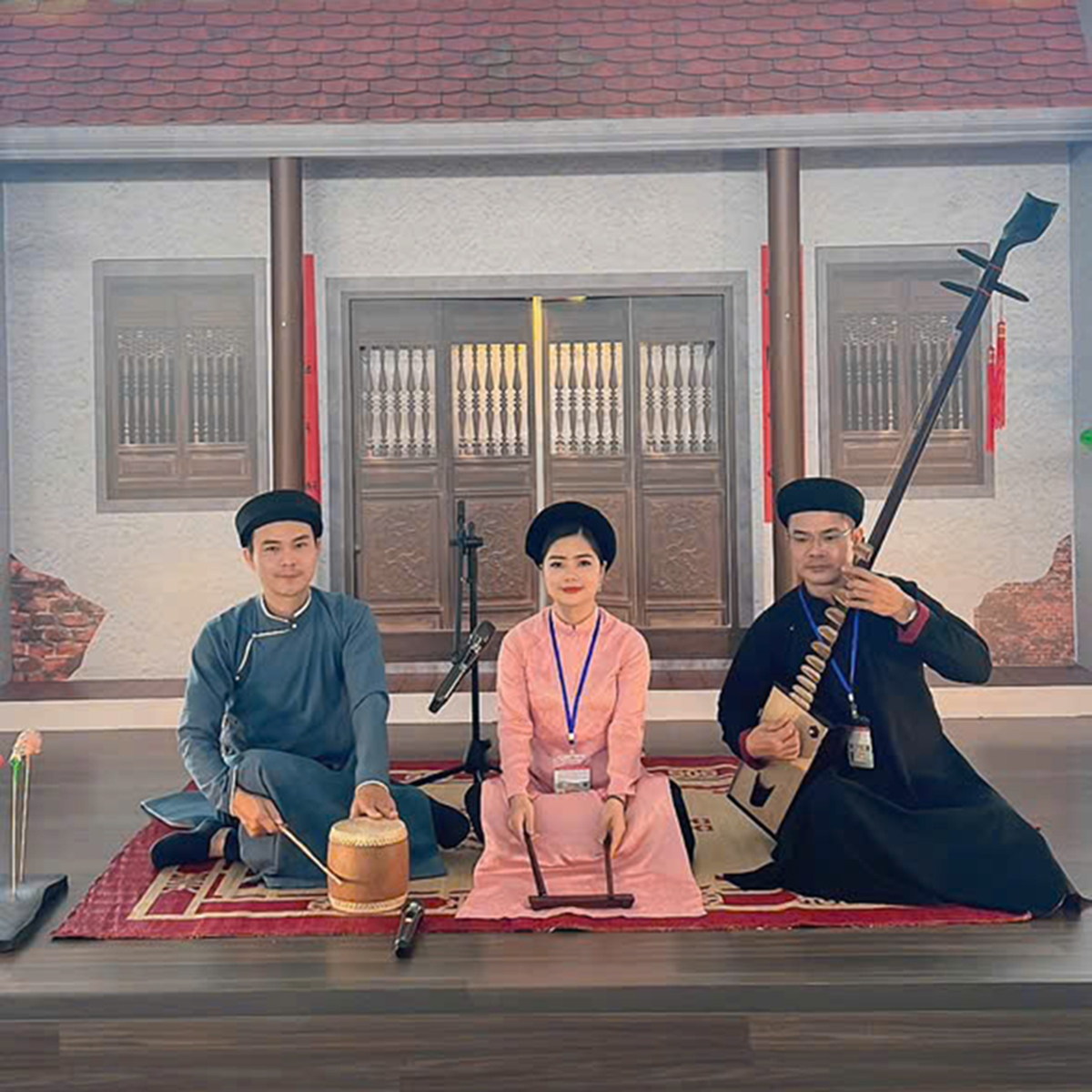 |
| Singer Dinh Thi Van: "I don't sing ca tru to live, but I live to sing ca tru." |
The biggest difficulty she has ever faced is not financial, because singer Dinh Thi Van believes that: "Ca Tru cannot be a livelihood". Those who are attached to Ca Tru from the heart understand that this is an art to preserve, to love and cherish, not a profession to make a living. But what worries her most is the indifference and coldness of a part of young people towards traditional cultural values. "Many young people have never heard a complete Ca Tru performance, and do not even know what Ca Tru is", she shared.
According to her, that is more painful than any other worry about food and clothing because without listeners, without learners, no matter how much the artist contributes, it is just like the flowers blooming in the night, beautiful but no one sees, quietly then fades. She understands that to preserve an art form, it requires not only the transmitter but also the receiver. And it is in the silence of the young that she sees the shadow of a future that may lack the sound of clappers and stone zithers. That is what makes her heartbroken and makes her constantly strive.
However, Dinh Thi Van did not give up, she still sang and sowed silently. For her, ca tru is a candle, although flickering in the flow of modernity, it still has to be preserved by human strength. “I believe that the spirit of patriotism always exists in every Vietnamese person. When we truly love our country, we will find our way back to the most simple and quintessential values, including ca tru as an indispensable part of the soul of Vietnamese culture.”
| Clip of the moment artist Dinh Thi Van performs Ca Tru in the documentary "Sênh Phách Rền Vọng" produced by VTV. |
BAO NGOC
Source: https://www.qdnd.vn/phong-su-dieu-tra/cuoc-thi-nhung-tam-guong-binh-di-ma-cao-quy-lan-thu-16/ca-nuong-dinh-thi-van-dua-tieng-hat-dinh-xua-den-trai-tim-nguoi-tre-834241


![[Photo] President Luong Cuong receives US Secretary of War Pete Hegseth](https://vphoto.vietnam.vn/thumb/1200x675/vietnam/resource/IMAGE/2025/11/02/1762089839868_ndo_br_1-jpg.webp)


![[Photo] Lam Dong: Images of damage after a suspected lake burst in Tuy Phong](https://vphoto.vietnam.vn/thumb/1200x675/vietnam/resource/IMAGE/2025/11/02/1762078736805_8e7f5424f473782d2162-5118-jpg.webp)


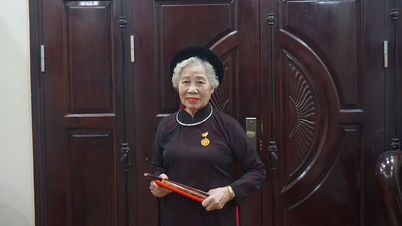


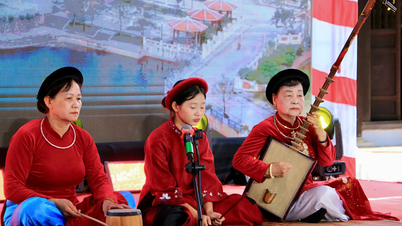

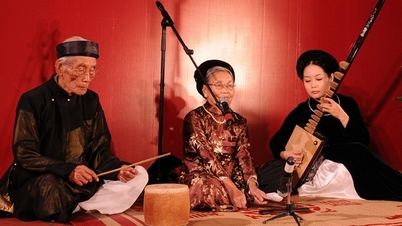

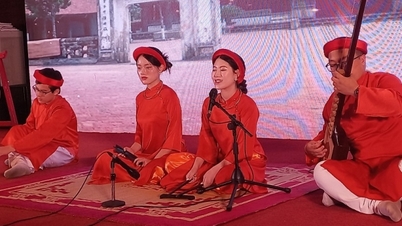

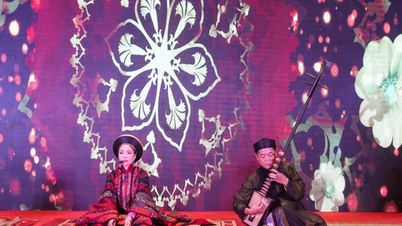















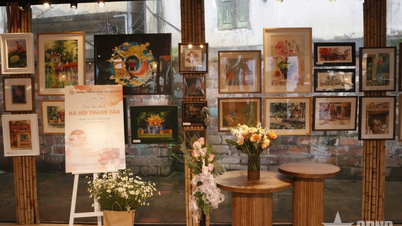










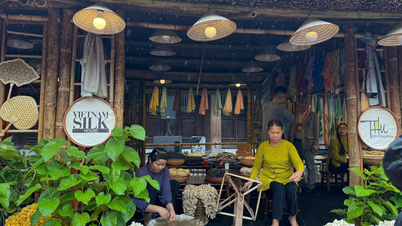


































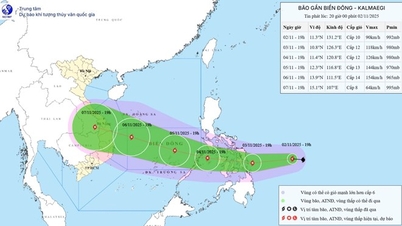



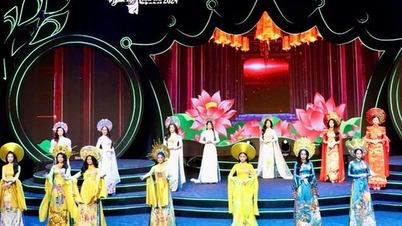




























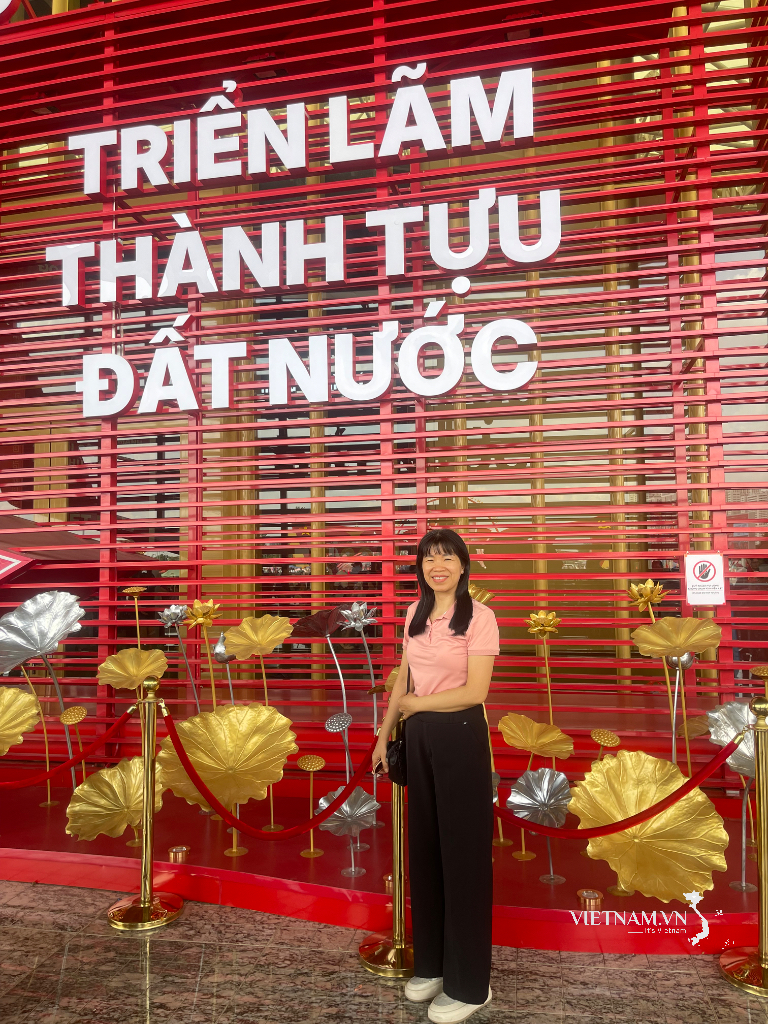

Comment (0)